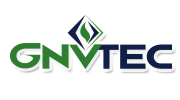Mapping Research Trends: Utilizing Detailed Statistics to Visualize the Advancement of a Field in Materials Reviews
Posted on 4 agosto, 2023
Literature reviews but not only summarize existing research but additionally have the potential to reveal dynamic trends and shifts within a certain field. By harnessing descriptive statistics and visualization strategies, researchers can map the evolution of research developments over time. In this article, we investigate how descriptive statistics can be employed to create insightful visualizations which capture the trajectory of the field’s development.
Descriptive Data in Literature Reviews
Detailed statistics involve summarizing and also presenting data in a meaningful and informative way. Whilst they don’t delve into causal interactions or inferential analysis, they give a comprehensive overview of trends, habits, and characteristics within a dataset.
Visualizing Research Trends
Visualizations are powerful tools that will transform complex data straight into easily digestible insights. Any time applied to literature reviews, visualizations can illustrate the development of research trends and the interrelationships.
1 . Publication Occurrence Over Time
One of the simplest still revealing visualizations is a time frame chart displaying the consistency of publications on a distinct topic over the years. This reveals periods of heightened study activity and potential shifts in focus.
2 . Search phrase Co-Occurrence Networks
Creating key word co-occurrence networks helps distinguish clusters of related phrases within the literature. Nodes signify keywords, and edges joining nodes indicate their co-occurrence in studies. This shows the core themes and also subtopics within the field.
three. Author Collaboration Networks
Imaging author collaboration networks displays how researchers collaborate around studies. This can highlight important researchers and research organizations shaping the field’s advancement.
4. Citation Analysis
Imaging the most frequently cited studies reveals seminal works who have significantly influenced the field’s direction.
5. Geographic Submission
Mapping the geographic circulation of research can provide observations into regional concentrations connected with activity and potential cultural or contextual influences.
some. Methodology Distribution
A quiche chart or bar chart showing the distribution regarding research methodologies used in reports can provide an overview of the field’s empirical approach.
Data Selection and Analysis
To create important visualizations, follow these steps:
1 . Data Collection
Collect a comprehensive dataset of relevant scientific studies using systematic search methods. Ensure that the dataset addresses a sufficient time span to capture developments.
2 . Data Extraction along with Coding
Extract relevant info from each study, which includes publication year, visit this website keywords, authors, methodologies, and geographic place.
3. Descriptive Analysis
Utilize descriptive statistics like frequencies, percentages, averages, and proportions to summarize the extracted information.
4. Visualization
Choose correct visualization techniques based on the info and research questions. Use software tools like Python, L, Tableau, or network analysis tools to create visualizations.
Rendering, rendition, interpretation Visualizations
Interpret the visualizations by identifying trends, modifications, and patterns. Consider the benefits of these findings for the field’s development and potential exploration directions.
Conclusion
Incorporating detailed statistics and visualizations in literature reviews transforms them into dynamic explorations associated with research trends. By how it looks representing the evolution of a field over time, researchers may gain deeper insights into its growth, identify influential functions, and inform their own charitable contributions. These visualizations not only improve the comprehensiveness of literature testimonials but also empower researchers to navigate the complex scenery of research trends using clarity and precision.

Got something to say?